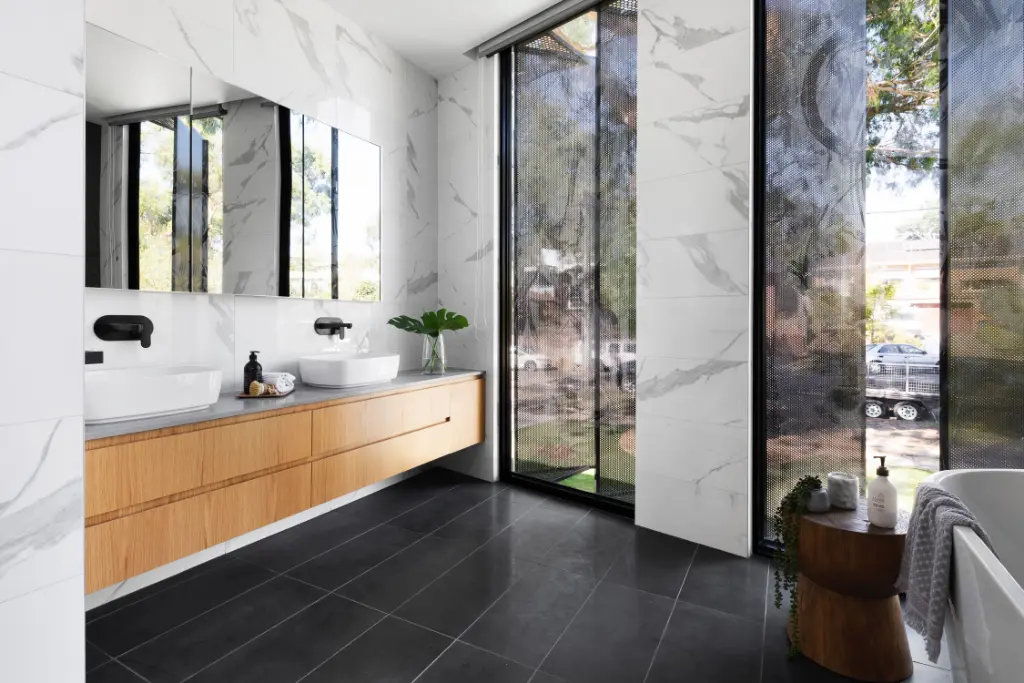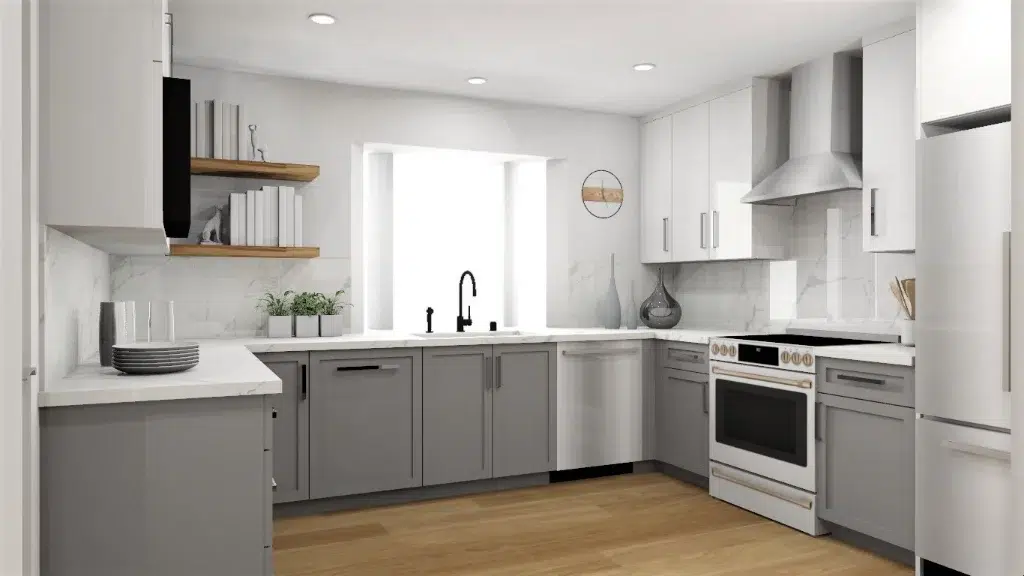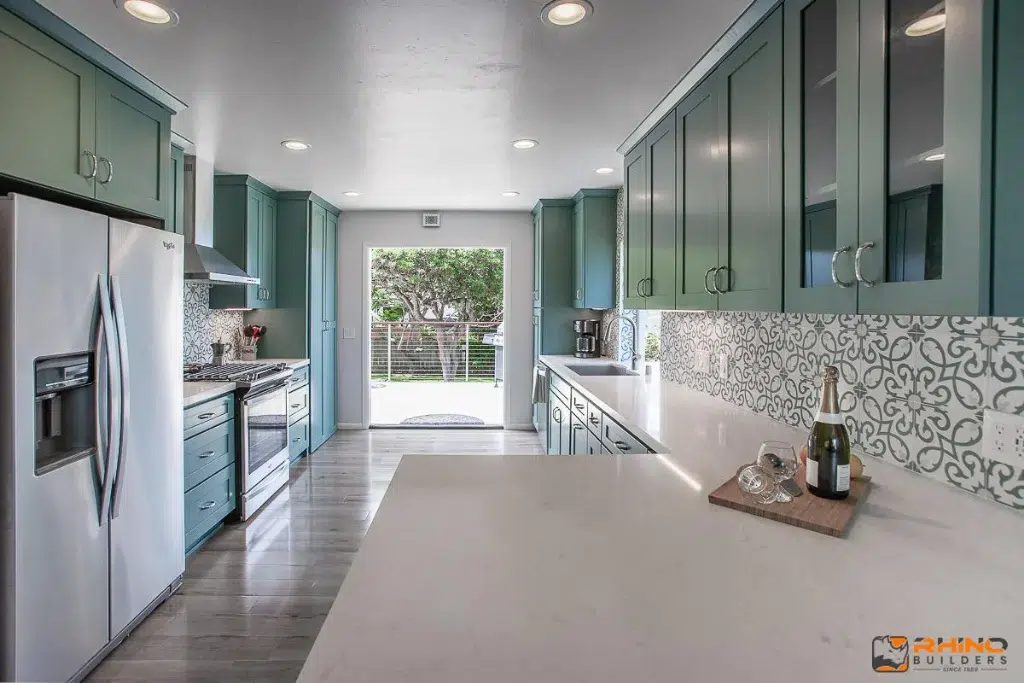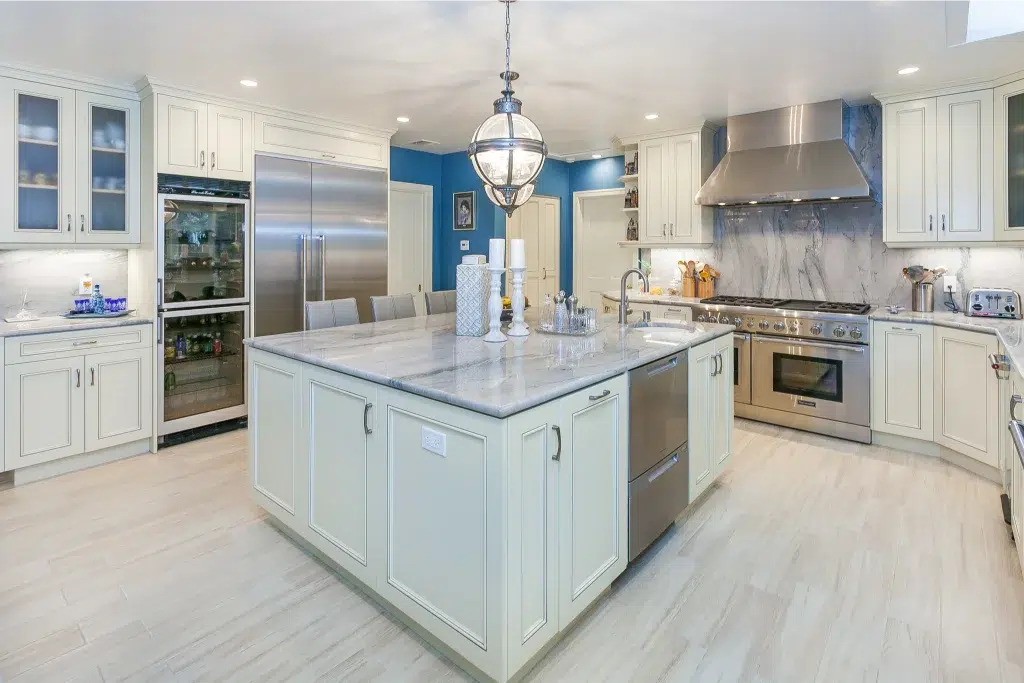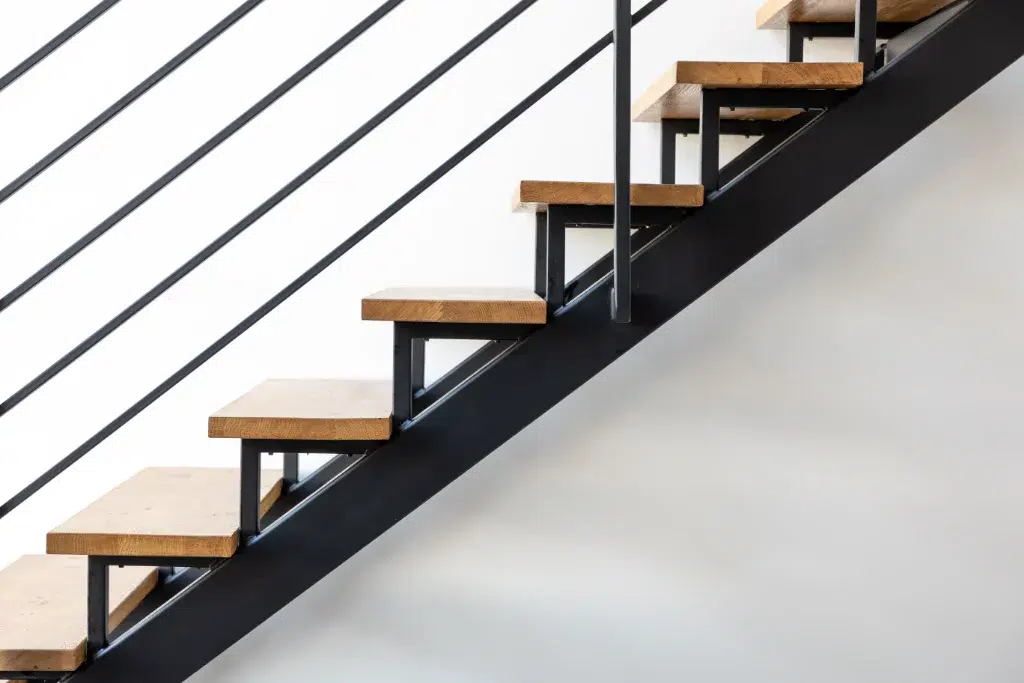If you’ve been thinking about upgrading your staircase, you’ve probably come across the term “metal stringers.” These structural components are the backbone of any good staircase, literally supporting every step you take. In our stair design series, we’re diving into everything you need to know about stairs, and this section will cover them specifically from basic concepts to installation tips. Let’s jump right in and explore what makes them so essential in modern stair construction!
What Are Metal Stringers and Their Role in Stair Construction
Metal stringers are the structural supports that run diagonally under your stairs, carrying the weight of the treads, risers, and anyone using the staircase. Think of them as the skeleton of your staircase. Without strong, well-designed stringers, your stairs would simply collapse!
Most commonly made from steel or aluminum, these metal stringers provide the foundation for the rest of the stair components. They determine the rise and run of each step, ensuring consistency and safety throughout the staircase. The beauty of metal stringers lies in their ability to blend structural integrity with design flexibility, enabling both traditional and contemporary stair styles.
The Simple History Of Metal Stringers
For centuries, wooden stringers were the foundation of stair construction. Traditional carpenters crafted them by cutting notches into large wooden beams to support each tread. This approach was practical and familiar, but it limited how far a staircase could span and what shapes it could take.
The Industrial Revolution in the 19th century changed how buildings were built. As iron and later steel became more affordable and widely produced, builders began incorporating metal components into stair construction—first in factories, public buildings, and other large structures where strength and fire resistance were critical. These early metal stairs marked the beginning of the transition away from all-wood framing.
By the early to mid-20th century, metal stringers had become increasingly popular in modern architecture and high-end residential designs. Their ability to span longer distances without intermediate supports allowed for open, minimalist staircases that fit the emerging architectural styles of the time.
Today, metal stringers continue to evolve. Fabricators combine long-proven structural principles with advanced manufacturing techniques such as laser cutting and precision welding. The result is a blend of durability, strength, and design freedom that supports everything from sleek floating stairs to bold sculptural designs—an enduring legacy of craftsmanship meeting modern engineering.
Types of Metal Stair Stringers for Modern Designs
There are several main types of metal stringers you’ll encounter in contemporary stair designs:
- Closed stringers – Solid metal plates with a zigzag upper edge that follows the stair profile
- Open (or cut) stringers – Similar to closed but with material removed to create a more decorative profile
- Mono stringers – Single central supports that create a floating effect
- Double stringers – Two parallel supports for extra strength in wide staircases
- Z-shaped stringers – Modern alternatives that create a zigzag pattern underneath the treads
The type you choose depends on your design preferences, structural requirements, and budget. Each has its own visual impact on your space, from nearly invisible to boldly architectural metal stringers that become a focal point.
Floating Stair Designs Using Metal Stair Stringers
Floating stairs have become incredibly popular in modern homes, and metal stringers make them possible. These designs typically use hidden or minimal stringers to create the illusion that the treads float in mid-air.
The metal support structure is often concealed within walls or designed as an intentional architectural feature. Strong steel construction allows cantilevered treads to extend from the wall without visible support, creating a dramatic, spacious feel in your home.
Popular Stringer Styles in Commercial and Residential Settings
In commercial settings, you’ll often find robust metal stringers designed for heavy traffic and compliance with strict building codes. These prioritize function and durability over decorative elements.
Residential settings offer more design flexibility. Here, you might see exposed metal stringers in industrial-style homes, painted stringers that complement interior color schemes, or hybrid designs that combine metal stringers with wooden treads for warmth. The trend toward mixed materials has made metal stringers popular even in traditional homes.
Benefits of Steel Stair Stringer Systems
Why are so many homeowners and builders choosing metal stringers? The advantages are pretty compelling:
First, durability is a major selling point. Unlike wood, metal stringers won’t warp, rot, or be damaged by insects over time. They maintain their structural integrity for decades with minimal maintenance.
Second, precision manufacturing ensures that each stringer is identical, creating perfectly aligned steps. This results in safer, more comfortable stairs that meet building codes.
Third, the versatility of metal stringers allows them to work with virtually any architectural style. From sleek minimalist stairs to ornate decorative designs, metal can be cut, formed, and finished to achieve your vision.
Lastly, fire resistance gives metal stringers a safety advantage, significant in multi-story buildings where stairs serve as emergency exits.
Note on fire & corrosion: Steel stringers are noncombustible, but they still need proper fireproofing/enclosures to meet rated egress requirements. In exterior or humid environments, specify corrosion protection (e.g., hot-dip galvanizing or a duplex coating) to ensure long service life.
Installation Considerations for Metal Stair Stringer Systems
Installing metal stringers isn’t typically a DIY project. Most systems require precise measurements, specialized tools, and an understanding of structural principles. It’s usually best to work with professionals who specialize in stair construction.
Before installation begins, you’ll need accurate measurements of the total rise (vertical height) and run (horizontal distance) of your staircase. These dimensions determine the angle and length of your stringers.
Connection points are critical, too. Metal stringers must be securely fastened to both the upper and lower levels, typically using heavy-duty anchors or welding. For floating designs, the connection to wall framing must be engineered to support significant weight.
Many manufacturers now offer pre-fabricated metal stringer systems that simplify installation while ensuring structural integrity. These systems often include detailed instructions and all necessary hardware.
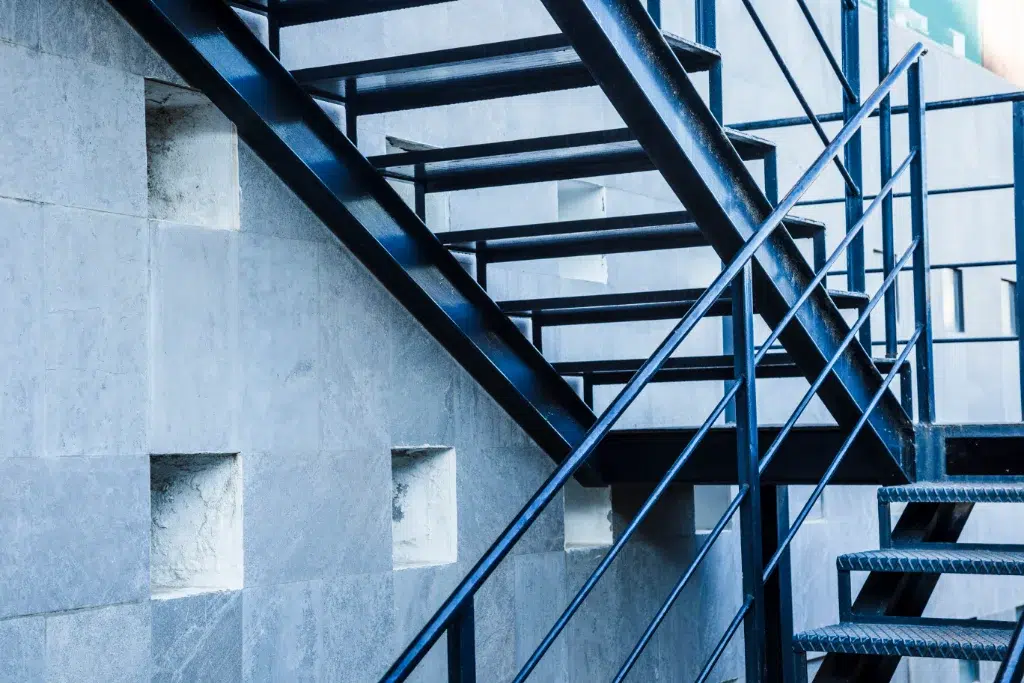
Pairing Metal Stringers with the Right Stair Tread Materials
One of the great things about metal stringers is their compatibility with virtually any tread material. This flexibility allows you to customize your staircase to match your interior design.
Hardwood treads offer warmth and traditional appeal, making a beautiful contrast with sleek metal stringers. Oak, maple, and walnut are popular choices that hold up well to use daily.
For ultra-modern spaces, glass treads create a stunning visual effect when mounted on minimal metal stringers. The transparent steps seem to float in space, allowing light to flow through.
Concrete, stone, and various composites also pair beautifully with metal supports. Each material brings its own character while relying on the strength of the metal stringers beneath.
Metal Stringers: The Foundation of Durable and Stylish Staircases
To wrap things up, metal stringers truly represent the perfect marriage of form and function in stair design. They provide the essential structural support that keeps your staircase safe and sturdy for decades.
Beyond their practical benefits, metal stringers open up a world of design possibilities that weren’t available with traditional construction methods. Whether you prefer the industrial look of exposed metal or the magic of seemingly floating treads, metal stringers make it possible.
As you plan your next staircase project, consider how metal stringers might help you achieve both the look and performance you desire. With proper design and installation, they’ll support your steps reliably for generations to come.

